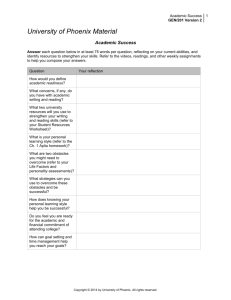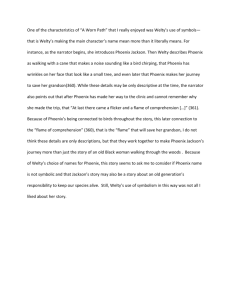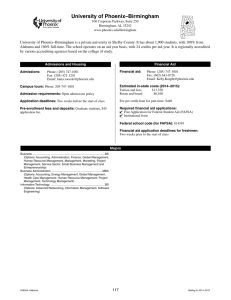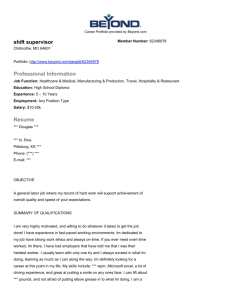“A Worn Path,” by Eudora Welty is a heartbreaking story about the
advertisement
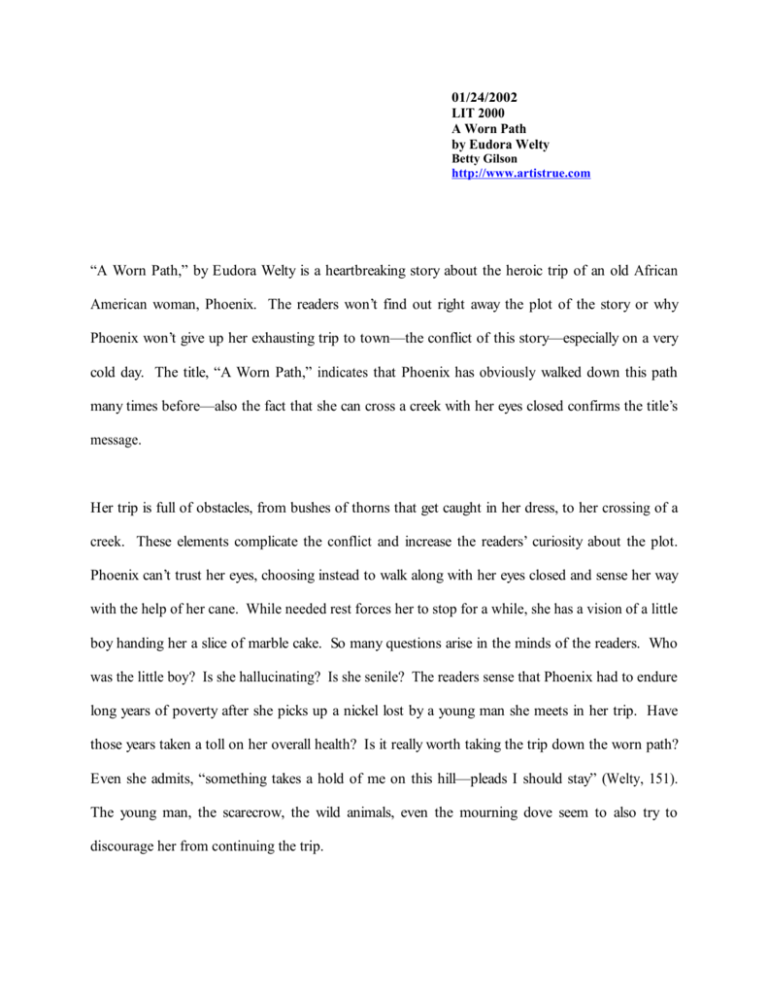
01/24/2002 LIT 2000 A Worn Path by Eudora Welty Betty Gilson http://www.artistrue.com “A Worn Path,” by Eudora Welty is a heartbreaking story about the heroic trip of an old African American woman, Phoenix. The readers won’t find out right away the plot of the story or why Phoenix won’t give up her exhausting trip to town—the conflict of this story—especially on a very cold day. The title, “A Worn Path,” indicates that Phoenix has obviously walked down this path many times before—also the fact that she can cross a creek with her eyes closed confirms the title’s message. Her trip is full of obstacles, from bushes of thorns that get caught in her dress, to her crossing of a creek. These elements complicate the conflict and increase the readers’ curiosity about the plot. Phoenix can’t trust her eyes, choosing instead to walk along with her eyes closed and sense her way with the help of her cane. While needed rest forces her to stop for a while, she has a vision of a little boy handing her a slice of marble cake. So many questions arise in the minds of the readers. Who was the little boy? Is she hallucinating? Is she senile? The readers sense that Phoenix had to endure long years of poverty after she picks up a nickel lost by a young man she meets in her trip. Have those years taken a toll on her overall health? Is it really worth taking the trip down the worn path? Even she admits, “something takes a hold of me on this hill—pleads I should stay” (Welty, 151). The young man, the scarecrow, the wild animals, even the mourning dove seem to also try to discourage her from continuing the trip. 2 As the readers follow Phoenix along the worn path, their respect for her character grows, as they witness the difficulties she encounters along the way. She sometimes talks out loud to objects, visions, or the wild life, which indicates that she is used to being alone most of the time. Although afraid of the wild animals, she continues her trip through the deep woods, up hill through pines, and down hill through oaks. Here, walking through the evergreen pine woods symbolizes her lost youth (when she’s climbing up hill, she feels like she’s wearing chains around her ankle), while walking through the oaks trees symbolizes the close ending of her life. As mentioned above, while walking up hill, Phoenix feels imaginary chains around her legs—one of the hidden clues about Phoenix’ social status and financial situation. They can also indicate that she is getting close to the end of her own worn path, her life. The readers get a better understanding about her social status, when she meets a young man. Although he seems to be nice, he will point a gun towards Phoenix, trying to discourage her from completing her trip, rather than helping her to complete it. This would be an inexcusable gesture in our day and time, although it allows the reader to witness her heroic character, as well as to find out about her hard life: “I seen plenty go off closer by, in my day and for less than I done” (153). Her vocabulary also indicates that Phoenix wasn’t fortunate enough to receive a good education. While the young man is pointing the gun towards Phoenix, for a second the readers wonder if she is going to give up. This moment also marks the crisis of the conflict. When Phoenix arrives in town at the doctor’s office—which also marks the climax of this story— the readers finally understand the plot of the story: Out of love for her ill grandson, Phoenix walks the worn path to buy needed medication for him. It’s heartbreaking, especially since, for a while, she doesn’t remember why she came to the hospital, in the first place. At this point in time, 3 it’s not sure if the little boy who drank lye is still alive, or if he’s vividly living only in Phoenix’ mind. Because she can’t afford proper healthcare, Phoenix has to walk the warn path for the rest of her life—alone. “A Worn Path” is such a wonderful, although heartbreaking, story. Like the Phoenix, a legendary bird who rises out of its own ashes, our character’s strength and determination will allow her to cope with all the difficulties that her hard life presents to her. 4 Works Cited Welty, Eudora. “A Worn Path.” Literature: An Introduction to Writing. Roberts, Edgar V. and Jacobs, Henry E. New Jersey: Prentice Hall, 2001. 150-155.


